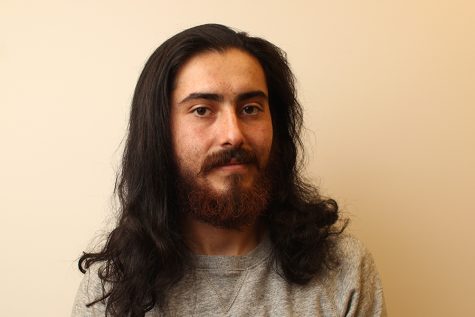Celebrating Latino multiculturalism
Oct 29, 2015
First-generation Latino college students, the sons and daughters of immigrants from countries in Central and South America, have strong familial ties to their cultural heritage.
But many of these first generation Contra Costa College students, and others in Richmond and San Pablo, tend to associate themselves with their countries of origin, instead of using the umbrella terms of Latino — or Hispanic.
“There is no correct term,” CCC counselor Norma Jimenez-Valdez said. “It depends on the individual, but most people who identify themselves as Latino or Hispanic do so in relation to their national origin.”
La Raza studies adjunct professor Edgar Mojica-Villegas agrees with Jimenez-Valdez. He said Latino is often used interchangeably with Hispanic, a term used by the Census Bureau in the 1980s under President Ronald Reagan’s administration, without completely understanding the political origins of those terms in the U.S.
“Something very interesting happens when (Central and South Americans) cross the U.S. border because people south of the border do not embrace one term to identify themselves,” he said. “But when they do cross, immediately their nationality takes second place and are forced to adopt pan-ethnic identity (of Hispanic or Latino).”
Contra Costa Community College District Governing Board Trustee John Marquez said unless they are a third or fourth generation Mexican, Puerto Rican or Cuban-American, then the struggles that Spanish speakers endured to attain political power in this country would be unknown to them.
La Raza professor Agustin Palacios said before the 1980s, these were the three ethnic groups that immigrated to the U.S., mainly California, seeking employment in fields in the Central Valley or factories in the Bay Area.
“People from Central and South America tend to be very nationalistic,” Marquez said. “Being connected to our country (of origin) is OK but we (Latinos) are here now and have to make the best out of our situation as a unit. We need to put nationalism aside because Latinos together have a greater political influence.”
History professor Manu Ampim said both terms emerged between the 1970s and 80s and replaced the political term of Chicano/Chicana after the civil rights movement lost momentum.
Dr. Palacios said Mexican- American youth and political activists adopted the Chicano or Chicana identity to promote equal access and fair treatment of Spanish speakers in education during the 1960s and early 70s amid the Vietnam War.
Marquez said he is a first generation college student who grew up during this time. He said while growing up in Richmond during the 1960s speaking Spanish at school was a punishable offense.
“In my generation, the 1960s, people of Mexican descent or (people of color) who spoke Spanish were not allowed to speak the language at school,” Marquez said. “It was considered a dirty language by our white teachers.”
Because of this unequal treatment, Marquez said he and CCC counselor Al Zuniga, both students at CCC, helped organize a Chicano studies department in 1969. This was in a time period when the majority of professors and administrators were either African- American or Caucasian, with only a handful of Latinos.
And 45 years later, according to The Advocate’s language diversity survey of 200 students in March, about 48 percent of students said they are the first in their families to go to college, and about 32 percent speak Spanish.
While it is no longer called the Chicano studies department, the La Raza and African American studies department has a long history of organizing cultural events and rallies like Dia de Los Muertos, Mexican Independence Day and Cinco De Mayo.


